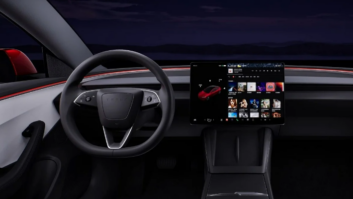As radio fights to retain a place in the center of the dashboard of the connected car of the future, sessions at the NAB Show 2018 Broadcast Engineering and Information Technology Conference gave an insight into how manufacturers are using artificial intelligence to control infotainment systems, and how broadcasters can use the Amazon Alexa platform to reach audiences.
Lior Ben Gigi, senior technical product manager for Nuance Communications, a supplier of voice recognition technology to the automotive industry, said, “About 10 years ago, only three million cars with voice recognition were sold worldwide. In 2017, about 93.5 million cars worldwide were sold with more than half (of those) with speech recognition capability.”
[Read: Smart Audio Trends to Watch in 2018]
Forty-five million of those had Nuance technology. As these systems evolve, the artificial intelligence factors will increase. Conversational AI aims to humanize the interaction between car owners, passengers and the car, he said.
For many, Amazon’s Alexa is an example of AI, and it’s one broadcasters should be utilizing by producing content that’s available for the asking, so says Graham Media Group lead developer Michael Graham. Graham talked about best practices that his stations use to take advantage of the Alexa platform. “Conversational input [into a device] is three times faster than typing. People demand news on their [voice assistant] devices. This is really something that we have to, as local media, be on these devices.” Graham says that custom productions for voice assistants seem to work better than repurposed content. Frequency of updates is important, with more frequent updates, weather for an example, a must. He says that local media has a chance to drive an audience to voice assistants with the proper amount of promotion.












